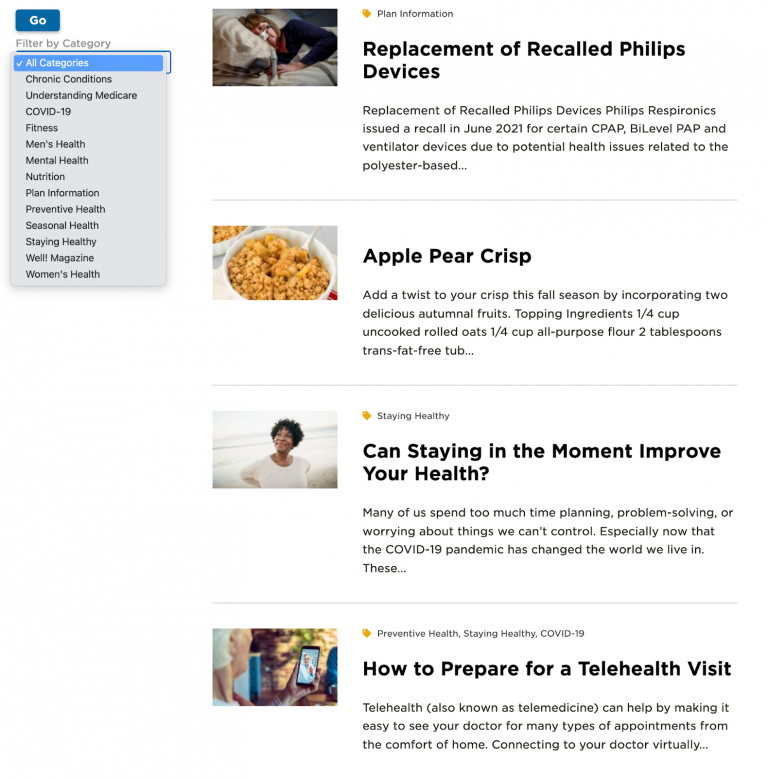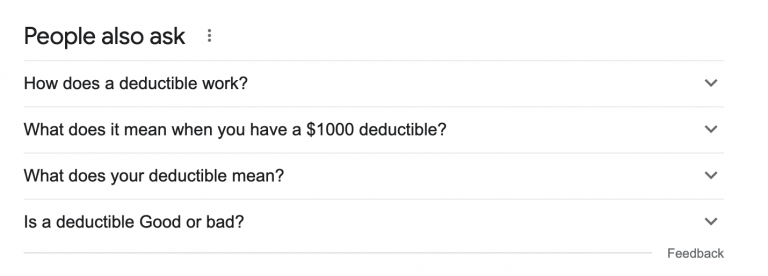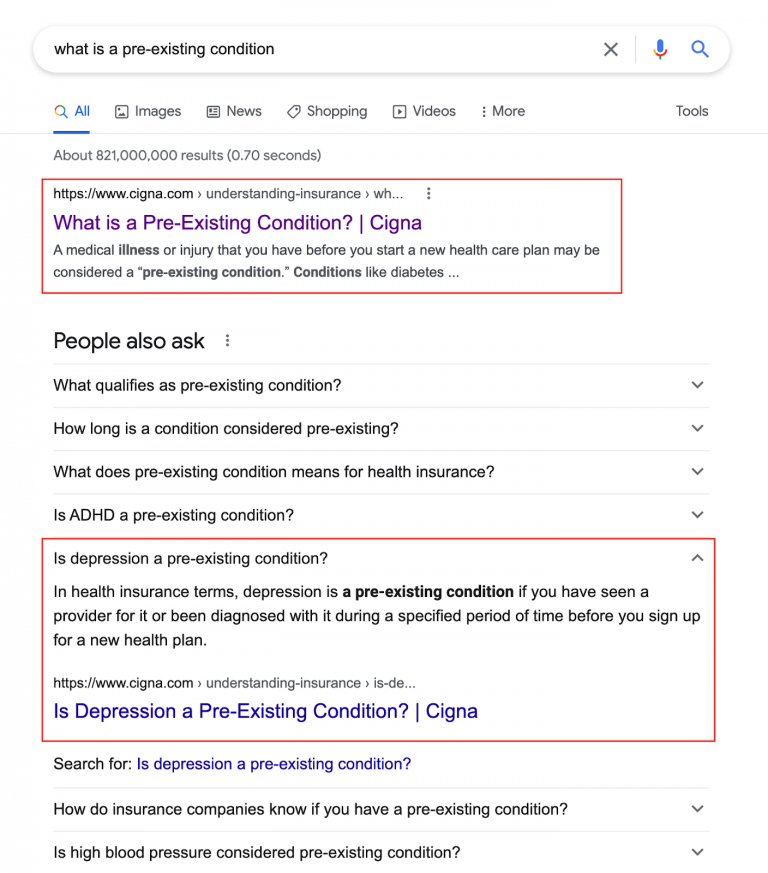
Healthcare organizations and health insurers can implement an inbound content marketing strategy to improve brand recognition, attract new patients, and stay engaged with their current patients and members – we layout how to create, implement, and measure content marketing efforts.
Inbound content marketing is the practice of using online articles or “blog” content that is written specifically to rank highly in organic search results. If the content ranks highly and provides relevant information, content marketing pieces will generate website traffic and bring more users in contact with the organization and its services.
For example, to reach a prospective member or customer, a health insurer might write and publish content that answers questions about health insurance, such as:
These broad-based, general interest questions can be answered by individual articles on the health insurer’s website. Once written, as a healthcare content marketing agency, we work to ensure that each article should be optimized to rank in organic search results for a few keywords. If properly search engine optimized (SEO), these articles will drive traffic to the health insurer’s website. Content marketing “articles” can also include images and videos — such explainer videos or infographics – that can be optimized to appear in Google Image or Google Video search results.
In addition to writing on topics that explain medical or insurance topics, healthcare marketers can produce articles on health and wellness topics. For example, our client Tufts Medicare Preferred produces health and wellness articles in 13 categories.

These articles can be used to reach prospective members and promoted to current members on social media channels or through e-newsletters. And while recipes might seem out of place, they are some of the most clicked content.
As part of developing a content marketing strategy, you can take advantage of the “People Ask” questions. Reviewing these questions can be a solid source of ideas for your healthcare content marketing campaign. Also, most SEO experts agree that Google uses these answers in voice search results (i.e., these are the answers Siri, Google Assistant, and Alexa provide when asked a question).

By including a concise answer to one of these questions in an article, Google may select it as an answer. There is no way to submit your answer to a question — to improve your chance you need to rank in the top five pages for a relevant keyword and include a concise definition or answer. If you are successful, you will likely have two links from the first page of Google results pointing to your content.
After publishing and optimizing content for keywords and Google rank, it’s time to start measuring and reporting on the impact. We measure content marketing reach in a few ways.
A more advanced method of demonstrating impact to calculate the number of clicks generated is “cost-per-click”. For example, if you wanted to buy traffic in Google ads with the keyword phrase “what is medicare part d” it would cost $6.21 (you can look up this cost in a tool like SEMRush or iSpionage). If a health insurer wrote an article that ranked first for this and received 100 clicks/month this is equivalent to generating $621/month (100 clicks at $6.21/per-click) in paid traffic.
Cigna created an Understanding Insurance hub that contains all of their content marketing articles. Their article on pre-existing conditions is extremely well optimized. It ranks first in Google Search for “what is a pre-existing condition.”

Note that Cigna’s content marketing scored a second win on this page. Their article, “Is Depression a Pre-Existing Condition” is used as an answer to one of the related question results in the “People also ask” section. This gives Cigna even more visibility and potential to draw in organic traffic.
Also, note how the page titles are carefully constructed:
Using keyword tracking tools, we can estimate a dollar value or return. In terms of value generated, Cigna is likely generating 50-100 clicks per month, each with a value of $9.03/click.

Doing the multiplication, that’s $450 to $900/month in traffic value each month. Remember, this is traffic that they are generating organically so they aren’t paying $9.03/click. Instead they are saving $9.03/click because they don’t have to pay Google Ads that price to rank at the top of the search results.
Here are the seven steps that you’ll want to follow to launch a successful healthcare content marketing campaign:
Remember that this content is representing your brand. Ensure that content aligns to and represents your brand. The content should be helpful, accurate, and high-quality.
In sum, content marketing is a strategy that requires an initial investment in keyword research and content development, but pays results for years. Two closing thoughts to keep in mind: organic results are more valuable (users convert at higher rates) and organic content, unlike paid digital marketing, is difficult for your competitors to immediately assail and outrank you.
This article was originally published January 31, 2022
We can help improve your online customer satisfaction and conversions. We're a team of 75 strategists, creatives, and technologists helping healthcare and health insurance marketers improve their web and digital marketing strategies. Learn more about our UX, content, and development services for healthcare and health insurance.

The original version of this page was published at: https://www.oho.com/blog/healthcare-content-marketing-strategy
OHO Interactive helps ambitious, forward-looking marketers maximize their investments in digital to elevate their organization’s prestige and recruit the customers they need.
Too often during website redesign projects, a content strategy framework isn't even considered until the project is well underway. Here we outline why your project will run more ...read more
While we write extensively about digital marketing trends and strategies at OHO, there are times when it’s far more practical to listen to content as opposed to reading it — ...read more
What are the essential 2023 marketing, communications, and web conferences for hospital and health system marketers?Who doesn't enjoy attending healthcare marketing conferences? ...read more
James Gardner, Director of Healthcare Strategy at OHO Interactive, recently spoke with Douwe Bergsma, Chief Marketing Officer at Piedmont, a highly respected health system ...read more